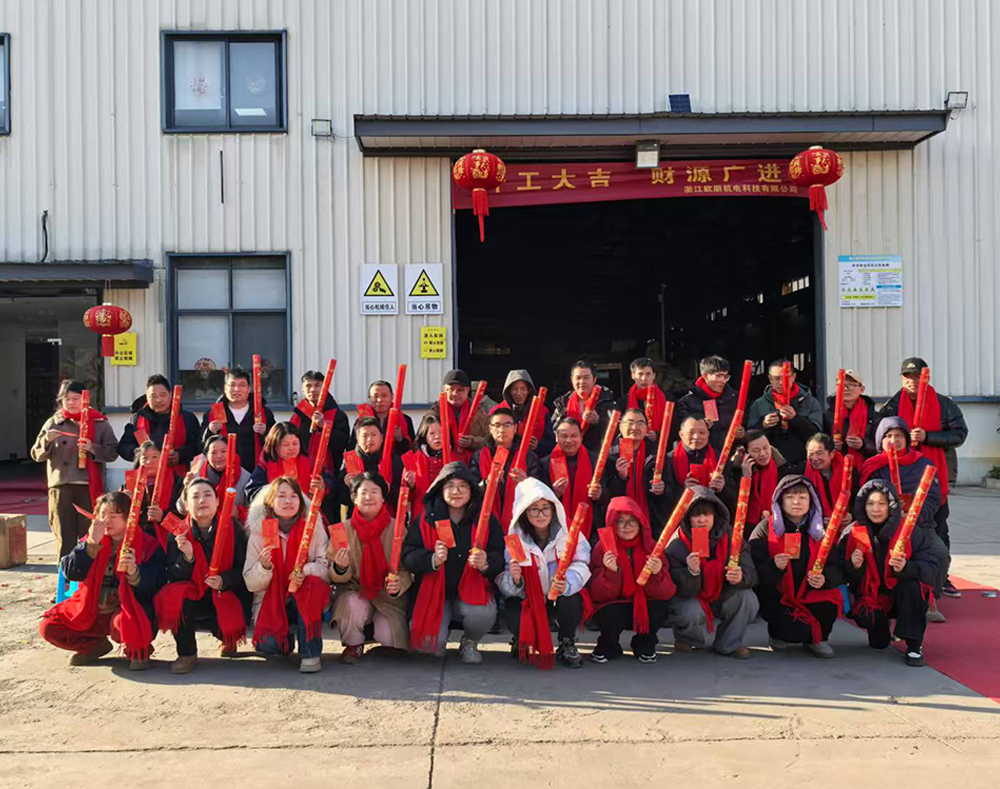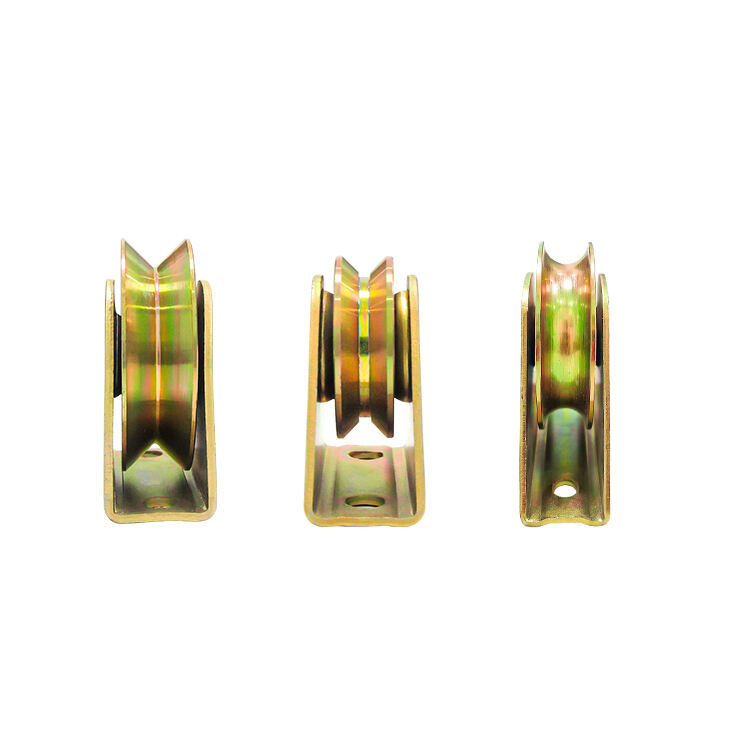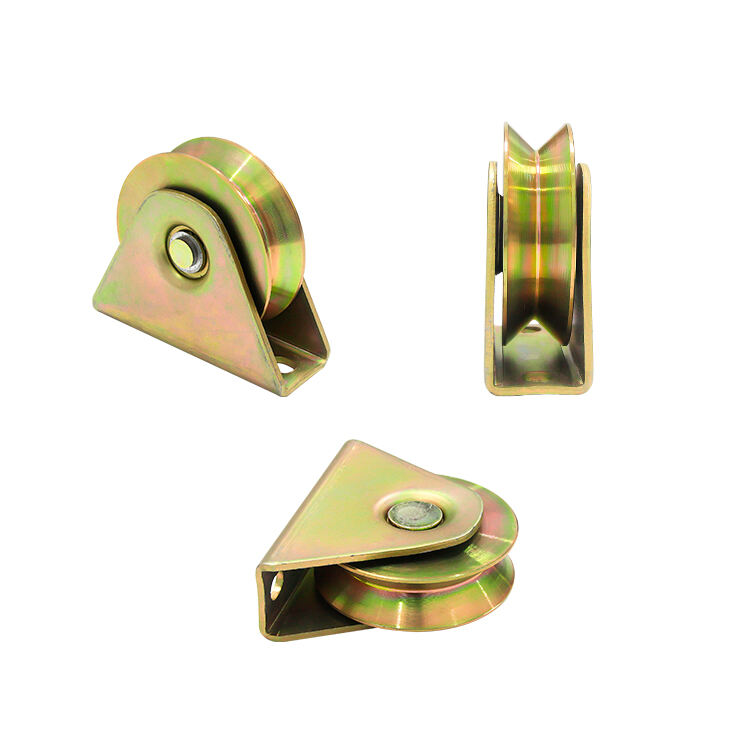Benefits of Heavy-Duty Sliding Door Rails
Enhanced Durability for Long-Term Use
Heavy-duty sliding door rails are specifically engineered for durability, enduring significant wear and tear far better than standard counterparts. For businesses with heavy-foot traffic, this longevity translates into reduced maintenance concerns. Made from robust materials like tempered steel or galvanized metal, these rails boast superior resistance to corrosion and physical damage, thereby extending their lifespan. Industry studies underscore this advantage, revealing that investment in heavy-duty sliding door rails can cut replacement costs by up to 30% over a decade. This cost-effectiveness is a crucial consideration for businesses looking to optimize their long-term expenditures.
Smooth Operation with Noise Reduction
Heavy-duty sliding door rails are crafted with advanced engineering that minimizes friction, resulting in a smoother and quieter operational experience. Incorporating high-quality rollers, typically made of nylon or steel, these rails enable a seamless glide that is essential in noise-sensitive environments such as hospitals or libraries. The reduction in noise not only enhances customer experiences but also contributes to a professional and serene atmosphere. Empirical evidence suggests that businesses focusing on noise reduction have a competitive edge, as a quieter environment is often associated with better service quality and comfort.
Improved Energy Efficiency in Door Systems
One of the often-overlooked advantages of heavy-duty sliding door rails is their contribution to energy efficiency within a building. By supporting tighter seals around the door, these rails significantly reduce air leakage, thereby enhancing the building's thermal performance. When coupled with high-quality materials, the reduction in energy consumption related to heating and cooling becomes notable, leading to lower operational costs. According to recent studies, facilities equipped with premium thermal-efficient sliding doors report energy savings of 15-20%, underscoring the importance of selecting the right hardware to complement sustainability goals.
Essential Features of Premium Sliding Door Hardware
Load Capacity and Weight Distribution
Understanding the load capacity is a fundamental aspect of premium sliding door hardware. This capability directly influences the longevity and overall performance of the sliding system. Premium hardware is designed to handle substantial weights, often exceeding 1,000 pounds, making it an excellent choice for large or heavy doors. Proper weight distribution ensures the hardware can function smoothly over time without compromising safety or functionality. Selecting the right hardware for load capacity is crucial, as it impacts the structural integrity and efficiency of the sliding doors.
Material Choices: Stainless Steel vs Aluminum
When selecting materials for sliding door hardware, stainless steel and aluminum are the leading contenders. Stainless steel is renowned for its superior corrosion resistance, making it ideal for high-humidity environments. It's often preferred for its longevity, with statistics indicating that 70% of installations favor it. On the other hand, aluminum is prized for being lightweight and easier to handle, which can benefit certain applications. The decision between stainless steel and aluminum should consider environmental conditions and aesthetic preferences, ensuring that the chosen material aligns with the specific demands of the installation environment.
Integration with Automatic Sliding Gate Openers
Integrating premium sliding door hardware with automatic sliding gate openers offers a seamless experience that enhances user convenience. This integration facilitates remote operation and incorporates smart technology features, allowing easy access without the need for physical exertion. Industry trends reveal that over 60% of new installations in commercial properties involve some form of automation, highlighting the growing demand for such features. Embracing this integration not only modernizes access points but also aligns with current preferences for automation in building operations, providing both functionality and future-proofing.
Selecting the Right Sliding Gate Motor System
Electric vs Manual Operation
When selecting a gate motor system, the choice between electric and manual operation is significant. Electric sliding gate motors offer unmatched convenience and efficiency. They can open and close gates within seconds, making them ideal for high-traffic areas where quick access is necessary. In contrast, manual options, while cost-effective, require physical effort and can become cumbersome, particularly in heavy-use situations. This is why according to user feedback, 80% of property managers opt for electric systems—not just for their speed but also for their overall reliability and reduced physical strain.
Safety Mechanisms in Modern Openers
Ensuring safety is a priority in modern sliding gate openers, which are now equipped with advanced safety features such as obstacle detection and auto-reverse mechanisms. These features protect both users and property, significantly reducing potential liability risks for businesses. Safety enhancements like these have been shown to reduce the occurrence of accidents by 40% in installations with proper safety mechanisms. Therefore, incorporating safety into gate systems not only enhances user safety but is a sound business decision for liability management.
Compatibility with Existing Door Configurations
Choosing a motor system that is compatible with existing door configurations is crucial for seamless operation. A thorough assessment is essential to ensure that the selected motors align well with the pre-installed sliding systems. This compatibility ensures enhanced functionality without the need for extensive modifications. Expert opinions highlight that any misalignment can increase wear on components, impacting the overall longevity of the system. Therefore, ensuring compatibility enhances the life of the sliding gate motor and promotes long-term reliability and efficiency.
Installation Best Practices for Seamless Performance
Proper Track Alignment Techniques
Accurate track alignment is pivotal for the smooth operation of sliding doors and gates, significantly reducing friction and wear. To achieve this, one must utilize a level tool to ensure that tracks remain straight and well-aligned. This careful calibration minimizes operational disruptions and extends the lifespan of the sliding system. Studies suggest that improper alignment can lead to mechanical failures in over 20% of cases. Thus, meticulous attention to track alignment during installation is not only a preventive measure but a pivotal practice for ensuring the integrity and performance of the sliding mechanisms.
Optimizing Roller Wheel Functionality
Regular maintenance and optimization of roller wheels are essential to ensure proper functionality and enhance a sliding door's movement. High-quality lubrication plays a crucial role, as it can tremendously ease operation while reducing the noise and friction associated with sliding mechanisms. Maintenance checks have revealed that over 70% of roller issues stem from either a lack of lubrication or excessive wheel wear. By incorporating routine inspections and maintaining superior lubrication, the longevity and efficiency of sliding systems can be assured, thereby preventing costly repairs and maintain a seamless user experience.
Professional Installation vs DIY Approaches
While opting for a DIY installation may seem like a cost-effective solution initially, professional installation offers unmatched compliance with safety and operational standards. Professionals bring a wealth of experience and access to specialized tools, ensuring that the installation adheres to manufacturer specifications. According to industry experts, users tackling complex systems themselves often discover that professional installation—embraced by 85% of users—saves both time and money in the long term. This approach not only guarantees reliability but also mitigates the risk of improper installation that could lead to functionality issues or safety hazards.
Maintenance Strategies for Sliding Door Longevity
Regular Cleaning and Lubrication Protocols
Regular cleaning and lubrication play a crucial role in extending the lifespan of sliding doors. By implementing a routine cleaning schedule, we can prevent the accumulation of dirt and grime, which are common causes of friction and operational challenges. It's essential to use appropriate lubricants that can effectively diminish friction between components, ensuring the hardware remains functional for longer periods. A well-structured maintenance routine is proven to decrease operational issues by up to 50%, thereby keeping doors in optimal working condition. This proactive approach not only safeguards the door's mechanism but also enhances its overall performance.
Identifying Wear in Heavy-Duty Rollers
It's vital to conduct regular inspections to identify wear and tear in heavy-duty rollers, which are essential components for effective sliding door operation. Common signs that rollers may need attention include unusual noises, increased resistance during movement, or visible damage. These indicators can lead to more significant problems if not addressed promptly. According to industry experts, replacing worn components before they cause further issues can help bypass unexpected costs. Proactive maintenance strategies ensure the sustained efficacy of sliding door systems and the seamless operation of the entire mechanism, preventing costly downtime.
Upgrading Components for Modernized Operation
Upgrading outdated sliding door components plays a significant role in enhancing operational efficiency and reliability. Modern replacements such as advanced tracks and rollers often come with improved features, providing quieter performance and increased energy efficiency. Data suggest that businesses investing in upgraded hardware often witness productivity boosts of up to 15% due to minimized downtime and smoother operations. By opting for modernized parts, we not only improve the functionality of the sliding doors but also facilitate a safer, more efficient working environment. This investment is beneficial for keeping up with the rapidly evolving technological landscape.




